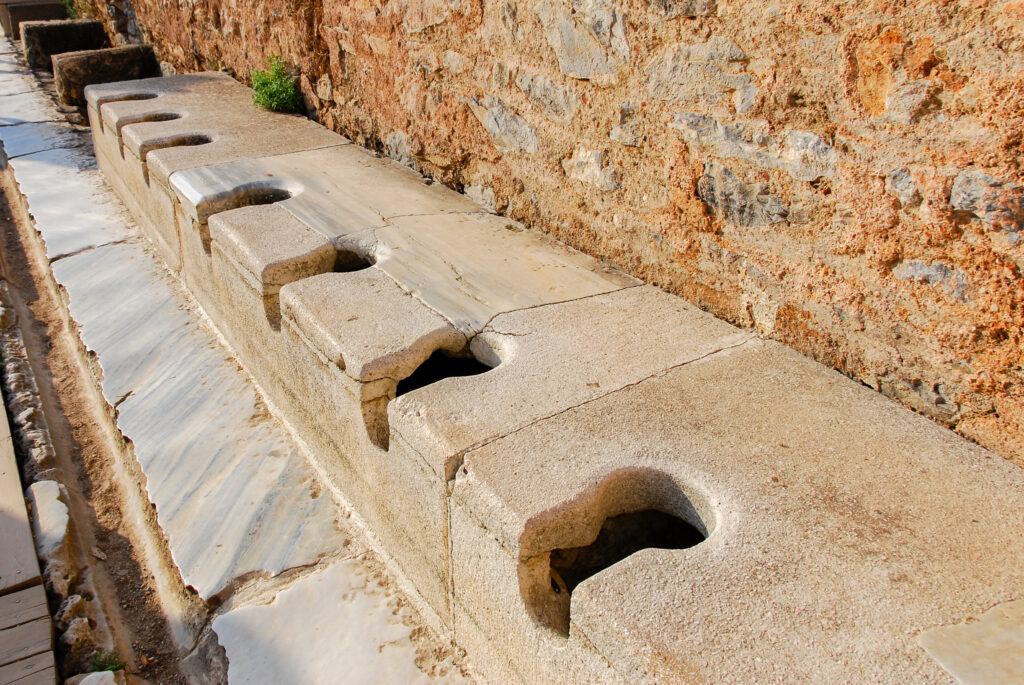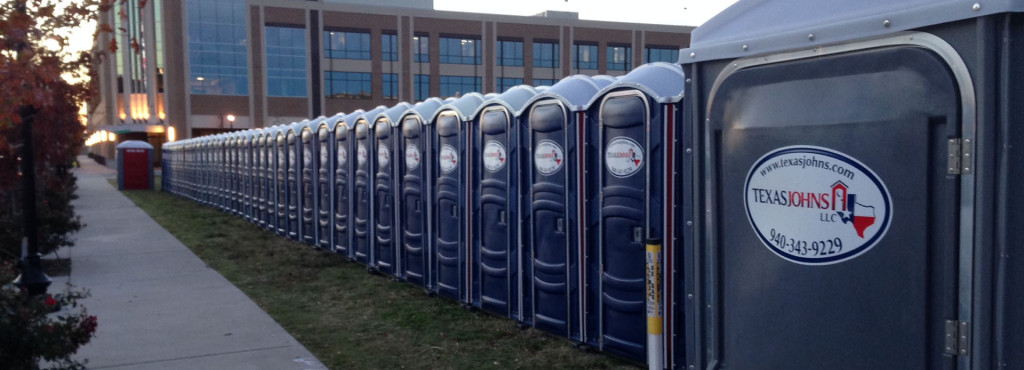While indoor plumbing is a modern marvel many of us take for granted, the need for portable sanitation certainly isn’t a new idea. Rudimentary portable toilets have existed for centuries.
Ancient Egyptians, for instance, used wooden boxes with holes over pottery vessels as mobile toilets during military campaigns. And let’s not forget the medieval “garderobe,” essentially a seat over a hole leading to a cesspit.
Thankfully, the evolution of portable toilets has brought about far better options! Let’s learn all about the history of portable toilets, this often-overlooked convenience.
Who Invented the Portable Toilet? And Why?
The genesis of the modern portable toilet came about amidst the massive construction projects of World War II. Shipyards and other sprawling work sites struggled with a lack of bathroom facilities close to the job. These early versions were built of heavy wood and metal, making them cumbersome, foul-smelling, and difficult to relocate.
Thankfully, the portable toilet industry saw significant innovation in the 1950s with the introduction of deodorizing liquids to manage the odor issue. Further evolution occurred in the 1960s, when George Harding received a patent for the plastic portable toilet – a breakthrough that dramatically revolutionized the concept.
Toilets Through History
While the portable toilets we know today might seem relatively modern, the concept of sanitation away from permanent facilities has roots in antiquity:
Ancient Civilizations
The earliest examples of portable toilets are surprisingly old! Archaeologists discovered a portable toilet dating back to the 14th century B.C. in the tomb of an ancient Egyptian architect. This elaborate wooden seat with a hole sat over a large pottery jar. The ancient Romans used similar devices, and even had communal toilets with rudimentary flush systems.
Medieval Times
The infamous chamber pot was a mainstay during the Middle Ages. These could be made of wood, pottery, or even elaborate metals for wealthy households. Of course, the unpleasant task of emptying these pots fell to lower-class members of society. Outhouses were also common, but still offered less than ideal sanitary conditions.
Industrial Revolution
Large-scale industrial projects of the 19th and early 20th centuries highlighted the need for more practical portable sanitation. However, primitive portable toilets of the era were heavy, unsanitary beasts typically made from wood and metal. The lack of odor control was a major problem, making them unpleasant for everyone around.
World War II
The sprawling shipyards and construction projects of World War II demanded portable restrooms that could be moved around worksites. Necessity truly became the mother of invention, but these early models still had major drawbacks in terms of odor and ease of maintenance.
1950s and 1960s
The popularity of plastics and innovations in chemical deodorizers in the 1950s helped reduce the unpleasant smell often associated with portable toilet rental. The real game-changer occurred in the 1960s, when the first plastic portable toilets were patented. These lightweight, more hygienic models spurred the massive growth of the portable toilet industry we know today.
Where did the Name “Porta Potty” Come From?
“Porta Potty” is actually trademarked. It originated as a brand name from the Porta-San Corporation, which became wildly successful in the 1950s and 1960s. Their widespread usage of the brand name led to “Porta Potty” becoming synonymous with any type of portable toilet.
Modern Portable Toilets Features
Today’s porta potty rentals are a far cry from their smelly, unsanitary predecessors! Here’s what you might find in contemporary models:
Construction. Durable polyethylene is the material of choice – it’s lightweight, easy to clean, and resists odor absorption better than fiberglass or old-fashioned materials.
Ventilation. Air vents in the roof and throughout the structure promote airflow, helping to manage odors and keep the interior cooler.
Interior Design. Spacious interiors and translucent roofing let in natural light, creating a less claustrophobic experience.
Amenities. Many modern portable toilets have hand sanitizer dispensers, toilet paper holders, and even mirrors, providing some creature comforts.
Specialized Options. Luxury restroom trailers, ADA-compliant units, and even portable toilets with flushing capabilities are available to meet diverse needs.
Texas Johns | The Future of Portable Toilets and Sanitation
Texas Johns understands how vital sanitation is for all types of events and work sites. Whether you’re planning a large concert, managing a construction site, or need sanitation solutions for a disaster aid situation, Texas Johns provides clean, well-maintained portable toilets.
Our range of portable toilet options ensures we have the right sanitation solution for you. Plus, we provide prompt delivery, setup, and excellent customer service. Reach out today!






